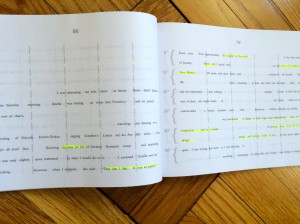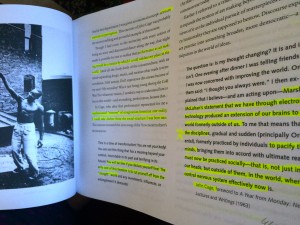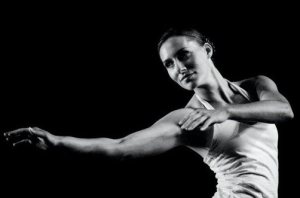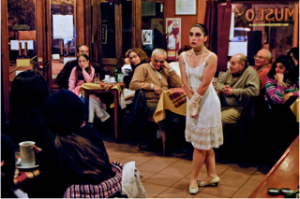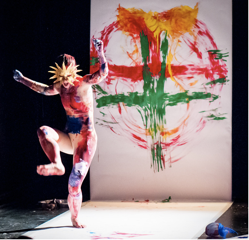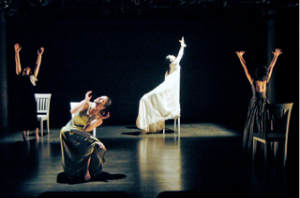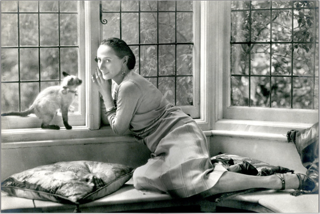by Grier Cooper
The first advice I ever heard about writing was to write what you know. This made a lot of sense to me, particularly with fiction, because it’s much easier to describe things we’ve experienced ourselves. WISH is a book I’d been wanting to write for a long time, because I wanted to share things that have shaped who I am. Ballet and other forms of dance have always been a part of my life so it felt very natural to use ballet as a setting for my story. Almost every little girl (and many adults too!) dreams of becoming a ballerina and for those who never experience it firsthand it’s an absolutely fascinating world and a dramatic contrast to another major theme of my life: growing up in an alcoholic family. I wanted to find a way to weave the two themes together to create a story of empowerment.
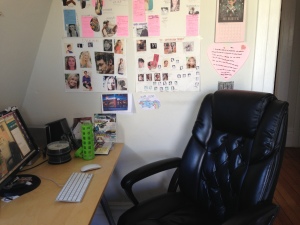 I’m a very visual person so I always begin a project by creating a vision board. I find pictures in magazines that resemble the characters and settings I imagine and put them together in a giant collage. These vision boards hang right next to my desk so I can look at them when I need to. It really helps to have that visual cue; it may sound weird but I swear I hear my characters talking. I also write character sketches for all of my characters before I begin writing. I think it’s important to figure out your characters’ motivations, likes, and dislikes before putting them in action.
I’m a very visual person so I always begin a project by creating a vision board. I find pictures in magazines that resemble the characters and settings I imagine and put them together in a giant collage. These vision boards hang right next to my desk so I can look at them when I need to. It really helps to have that visual cue; it may sound weird but I swear I hear my characters talking. I also write character sketches for all of my characters before I begin writing. I think it’s important to figure out your characters’ motivations, likes, and dislikes before putting them in action.
I began writing WISH many years ago, in between writing a bunch of other things. The first draft took me a little over a year to write. I wasn’t working with an outline; more of a vague sketch of where I wanted the story to go. I’ve since learned how helpful it is to outline first – I could have saved myself a lot of time and headache. A good, solid outline makes it much easier to look at things from a big picture perspective before you start writing. For instance, you can tell beforehand if the transitions between the chapters flow well.
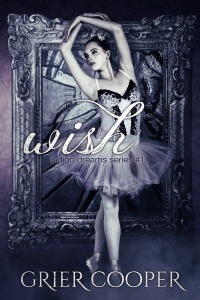 The actual process of writing a story is a sort of indescribable magic. I don’t think it’s the same for everyone. The only way I can describe it is it’s as if I am watching a movie in my mind. I see and hear everything going on and create the narration. The words flow from somewhere inside of me (my head, my heart, both?) and I write them down as they come. It’s incredibly exciting to have a story take form, even more so if you reach a state where the words just flow. There doesn’t seem to be any rhyme or reason to that flowing state…some days things flow, other days they trickle or drip.
The actual process of writing a story is a sort of indescribable magic. I don’t think it’s the same for everyone. The only way I can describe it is it’s as if I am watching a movie in my mind. I see and hear everything going on and create the narration. The words flow from somewhere inside of me (my head, my heart, both?) and I write them down as they come. It’s incredibly exciting to have a story take form, even more so if you reach a state where the words just flow. There doesn’t seem to be any rhyme or reason to that flowing state…some days things flow, other days they trickle or drip.
Once the first draft was done it felt good to have a finished project, but a first draft is nothing close to polished (although I’ve heard that John Irving gets pretty close). I knew my story needed a lot of work so I spent several months editing it and patching up holes in the plot. Then I put it away in a drawer.
It helps to give a manuscript time and space before you work on it again. It’s as if you see it all with fresh eyes. It was actually kind of painful to read the book at that point—all I could think was oh my God! This is terrible! I have to fix it! It’s incredible to see how much we grow as writers over time—even in just a few short months. That’s one of the things I love best about writing…not only do we keep improving the longer we do it, we can keep at it for the rest of our lives (unlike dancing professionally).
I was also lucky enough to work with a group of local writers – a stellar critique group I found through the Society of Children’s Book Writers and Illustrators (SCBWI). It’s important to get feedback from other people about your work, especially people who know the craft of writing and write in your genre (in my case, young adult). For the next year and a half, we worked together, pounding out the chinks in our books, one piece at a time. It was fun to meet with other writers around a big table, share yummy treats and give and receive advice about how we could improve our work. My critique partners asked a lot of questions, often about things that I hadn’t thought about.
Even after the work I’d done revising and implementing some of their suggestions, my novel still didn’t feel finished. That was a little hard to sit with, but I wanted the book to be as good as it could possibly be. I tinkered more, focusing on a few last pieces that weren’t quite there. This is going to sound counterintuitive, but I wrote the beginning last and it was the hardest part! I read about what makes a good beginning; I found a lot of helpful tips online, mostly from agents and editors. I reworked it lots of times until it finally felt right. I gave the entire book a final pass by reading it out loud, word by word. Errors or clumsy language are much more obvious when you say them out loud.
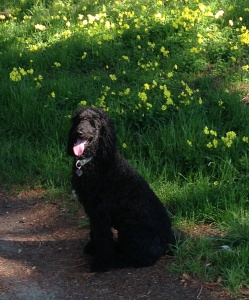 Of course, finishing a novel is just the beginning; there’s still a lot of work to do! I decided to shoot my own cover photo (I’ve worked as a commercial photographer for many years). Even creating the photo required a lot of planning in terms of costumes, makeup, hair, and lighting. I also do my own marketing and PR, which means – you guessed it – a whole lot more writing!
Of course, finishing a novel is just the beginning; there’s still a lot of work to do! I decided to shoot my own cover photo (I’ve worked as a commercial photographer for many years). Even creating the photo required a lot of planning in terms of costumes, makeup, hair, and lighting. I also do my own marketing and PR, which means – you guessed it – a whole lot more writing!
I’m now busy writing HOPE, the next book in the Indigo Dreams series. You can find me most days sitting at my desk working on it…after I walk the dog.
_________________________________________________________________________________________
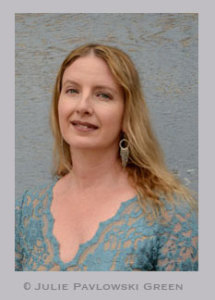
Grier Cooper has performed on three out of seven continents with companies such as San Francisco Ballet, Miami City Ballet, and Pacific Northwest Ballet, totaling more than thirty years of experience as a dancer, teacher and performer.
She blogs about dance in the San Francisco Bay Area and has interviewed and photographed a diverse collection dancers and performers including Clive Owen, Nicole Kidman, Glen Allen Sims and Jessica Sutta. She is the author of Build a Ballerina Body and the new ballet-based young adult novel, WISH. Visit Grier online at http://www.griercooper.com





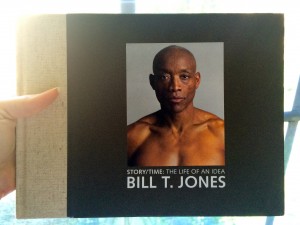 STORY/TIME is a three-part book that also serves as a companion piece to the Bill T. Jones/Arnie Zane Dance Company’s live production of Story/Time that will appear at New York Live Arts on November 4-8, 11-15 at 7:30pm. More information:
STORY/TIME is a three-part book that also serves as a companion piece to the Bill T. Jones/Arnie Zane Dance Company’s live production of Story/Time that will appear at New York Live Arts on November 4-8, 11-15 at 7:30pm. More information: 